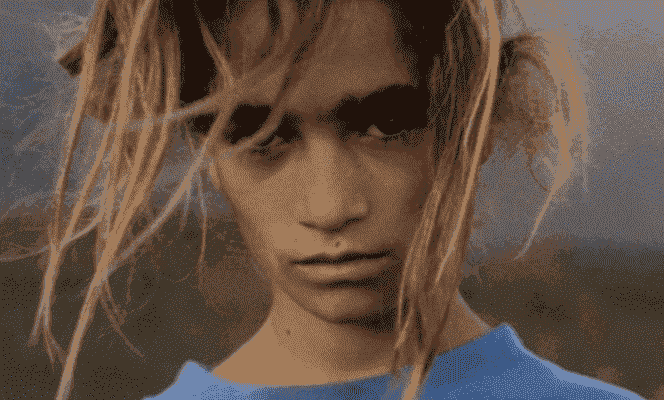A long hallway in the dark. The visitor advances, slowly, his gaze becomes accustomed little by little. Then comes a bifurcation towards a room with subdued lighting, where metal sculptures float, similar to signs of calligraphy. These works are interposed in front of the living portraits of Pedro Costa, who scrutinize you with their eyes, on the suspended screens. Here we are at the Center Pompidou, in Paris, groping our way through the exhibition entitled “Le reste est ombre”, designed by exhibition curators Philippe-Alain Michaud and Jonathan Pouthier, which brings together until August 22 the sculptor Rui Chafes, the photographer Paulo Nozolino and the filmmaker Pedro Costa. This is currently in the spotlight, with an integral retrospective of his work at the Tennis court (June 14 to 26) and the theatrical release of a film on June 15, Ventura. Cavalo Dinheiro.
The silhouettes of the three artists eventually stand out from the darkness. They accompany us on this winding stroll, imagined by the architect Isabelle Raymondo. “The rest is shadow” provides an anti-“white cube” effect, this immaculate space welcoming contemporary creations. Here, the works almost hide from view, you have to go find them.
Work haunted by the void
We did not know it, but the Portuguese director, born in 1959, has for several years maintained a dialogue with Rui Chafes and Paulo Nozolino, both from more or less the same generation as him: each, in his field, works on penumbra and the emergence of the works, rather than their frontal representation. Rui Chafes hammers a black, matte metal, creates eyeless, hollowed-out heads, or thin metallic ribbons similar to leather strips, hung on the wall, which one would almost be tempted to grab. “A Handful of Silence”analyzes the art historian Doris von Drathen, in the collective work published by the Center Pompidou, simply titled Pedro Costa, Rui Chafes, Paulo Nozolino. “’The rest is shadow’ is not about ghosts, but about existences in the void, with a scenography that blurs the inside and the outside. Likewise, in my work, the inside and the outside are equal”summarizes Rui Chafes.
Paulo Nozolino, whose analog work is haunted by emptiness, has installed a graphic triptych, all in parallel lines, of meat carcasses with their ribs echoing a row of guns and a brick wall. Another draw, Sarajevo (1997), portrait of a dead child who seems drowsy, in the morgue, next to a black steel plate by Rui Chafes, placed on the ground, slightly split, as if suffering from a wound Veu (Sail, 2016).
You have 23.66% of this article left to read. The following is for subscribers only.
